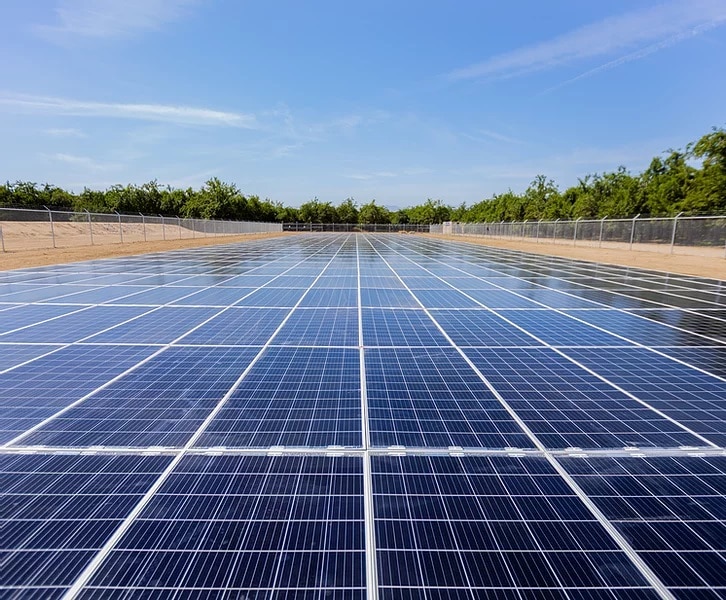Erthos is looking to disrupt utility scale solar installation through “solar simplified, from the ground up,” by literally installing their panels on the dirt. Panels lay flat upon the ground as “earth mount solar” installations, casting aside the use of trackers, mounts, and racks for a low-material approach.
The dramatic reduction in panel cost in recent years has fueled this change. According to Erthos, at current module prices, it is more cost-effective to buy additional solar modules to make up for the loss of efficiency from foregoing trackers.
Erthos says it can install projects in half the time of typical utility scale plants, at nearly half the cost, with costs running less than $0.50/W. The simple, flat outlay of the panels require 70% less underground trenching, 70% less cable, and very little water consumption, according to the Tempe, AZ based startup. The project is not anchored into the ground, so there is no digging cost and no sub-surface risk to contend with as well.
The design eliminates the use of gaps between rows and the array is installed as a large unified sheet, and Erthos said this allows their project to use one third the land area of a conventional utility scale solar design. While this approach is land-conscious, it is not compatible with a new approach some developers are adopting to support native grasslands, and to prevent erosion and flooding.
A key feature of the flat-faced system is an autonomous robot that rolls around on the panels and clears them of soiling. As part of their energy services division, Erthos maintains the cleaning robot, and claims less than 1% soiling through the life of their 20-year operations, maintenance, and cleaning contract.
Since the panels lay completely flat on the ground, Erthos says their projects are resistant to category-four hurricanes.
This content is protected by copyright and may not be reused. If you want to cooperate with us and would like to reuse some of our content, please contact: editors@pv-magazine.com.









Flat panels are subject to large hail damage and water build up on the surface from rain or dew that can capture more dust, so, cleaning off the bird droppings and dust would need to be done weekly. These are the panel lay outs that insurance companies are worried about since they can not be turned on edge during hail storm events. A top layer of unbreakable glass is needed on this design.
Erthos plants (like all plants) are designed for the specific site conditions, including required hail rating. Cleaning happens nightly.
Not all dirt is flat of course, and flat-on-ground would I think be most appropriate on ground with some sloping and thus a power of natural drainage. No option will be optimal for all areas, but I can see this being a good choice for some.
This does seem to be a rather bizarre approach. But if it turns out to work well and be highly reliable, it will probably catch on pretty fast if it truly saves half the normal cost. That’s an enormous savings. But I’ve temporarily put solar panels directly on the ground while experimenting and found that they get extremely hot because there’s no air circulation under them. And the efficiency drops more and more as they get hotter. But again, if they’re really saving 50% of initial installation costs vs. rack mounted systems, maybe this method still saves overall. Obviously, in flood prone areas, they’d have to spend some money on fill to build up the ground above the surrounding area. I’m guessing, no matter where they install these, they always have to grade the area flat first and probably very gently slope it so rain water drains off fairly quickly.
I wonder how they get access to all the panels for repairs – maybe they can walk on the frame edges?
Thanks for your comments, Dan. The earth is a heat sink so better thermal conditions than the much understood rooftop environment. Yes, layout maintains positive drainage. Access to panels is done with weight-distributing roll-out platforms.